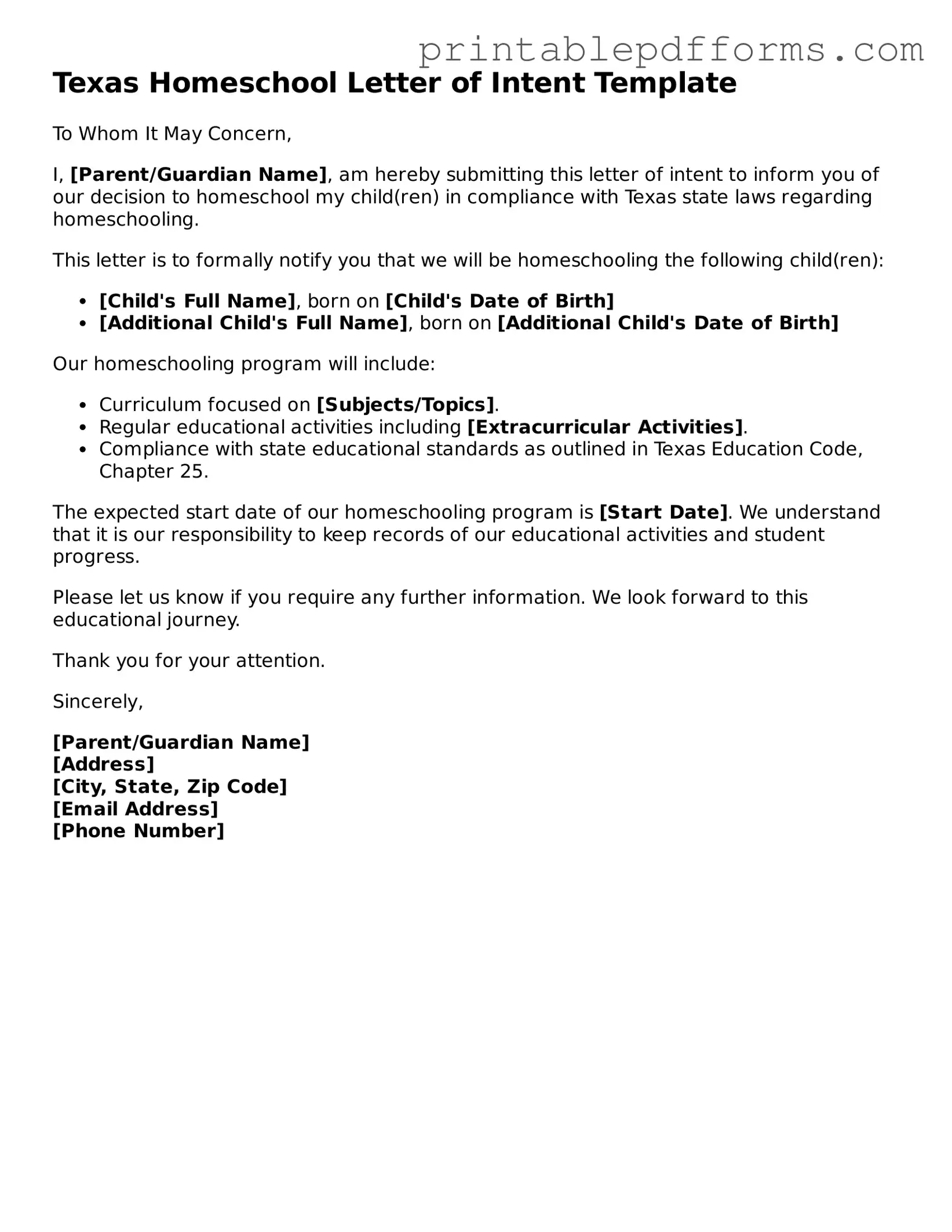What is the Texas Homeschool Letter of Intent?
The Texas Homeschool Letter of Intent is a formal document that parents or guardians must submit to the local school district when they decide to homeschool their children. This letter notifies the school district of the family's intent to provide a home education, ensuring compliance with state regulations.
Who needs to submit the Letter of Intent?
Any parent or guardian who plans to homeschool a child in Texas must submit this letter. This requirement applies to children aged 6 to 18 who are not enrolled in a public or private school. It is important to note that this letter is not required for children under the age of 6.
When should the Letter of Intent be submitted?
The Letter of Intent should be submitted at the beginning of the homeschooling period. Ideally, it is best to send the letter before the school year begins or as soon as the decision to homeschool is made. This proactive approach helps avoid any misunderstandings with the local school district.
The Letter of Intent typically requires the following information:
-
The name and address of the parent or guardian.
-
The names and ages of the children being homeschooled.
-
A statement indicating the intent to homeschool.
While the format of the letter can vary, including these key details ensures clarity and compliance with state requirements.
There is no mandated format for the Letter of Intent, but it should be clear and concise. Many families choose to write a simple letter that includes the necessary information. A template can also be used to ensure that all required details are included, but it is not a legal requirement to use any specific form.
Do I need to notify the school district every year?
Once the Letter of Intent has been submitted, there is no need to resubmit it annually. However, if there are changes, such as moving to a different school district or changes in the children being homeschooled, a new letter may be necessary. Keeping the school district informed helps maintain good communication.
What happens if I don’t submit the Letter of Intent?
If a parent fails to submit the Letter of Intent, the school district may assume that the child is still enrolled in public school. This could lead to potential truancy issues. To avoid complications, it is essential to submit the letter promptly and keep a copy for personal records.
For more information about homeschooling in Texas, parents can visit the Texas Homeschool Coalition website or contact local homeschooling organizations. These resources provide valuable guidance on the legal requirements, educational resources, and support networks available to homeschooling families.
